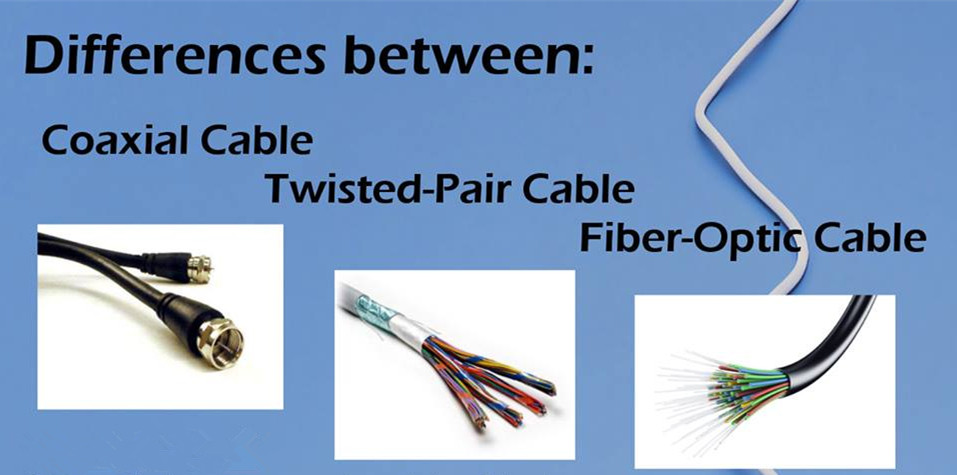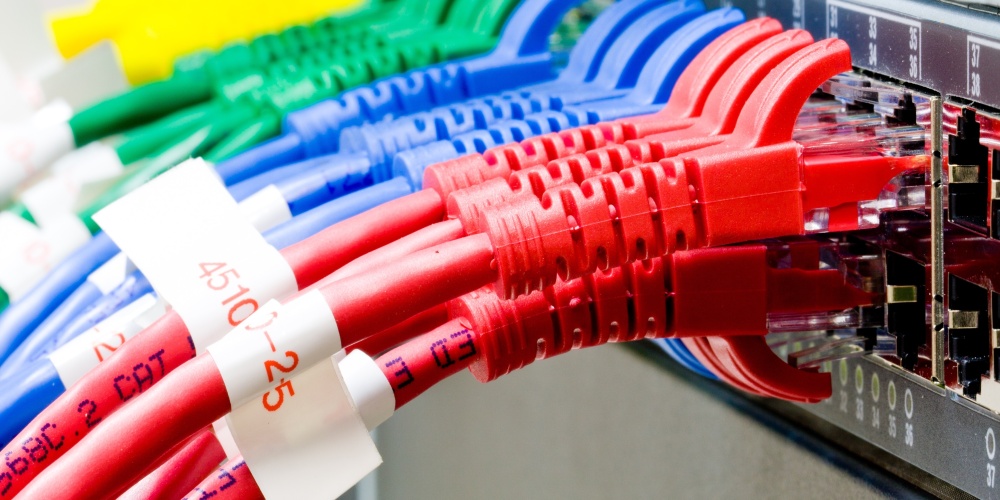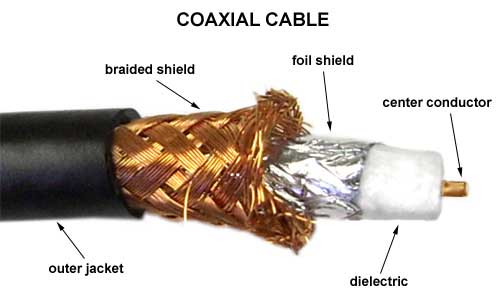As we all know, cables are the most important component to achieve data connections in every communication system. Most common cable types are fiber optic cable, twisted pair cable and coaxial cable. Many people are confused how to make choices for their networks. This article aims to make comparison among fiber optic cable, twisted pair cable, and coaxial cable, and tell you how to differentiate these three cables.

Twisted pair cable is a kind of wiring in which two conductors of a single circuit are twisted together. The twisted cabling design helps to reduce noise from outside sources and crosstalk on multi-pair cables. Twisted pair cable comes in two versions: unshielded twisted-pair (UTP) and shielded twisted-pair (STP). There is also some differences between fiber optic cable and twisted pair cable:

The signals transmission of fiber optic cable takes place in the electrical form over the metallic conducting wires, while the twisted pair cable takes place in an optical forms over a glass fiber.
Optical fiber has the highest noise immunity as the light rays are unaffected by the electrical noise, but the noise immunity of twisted pair cable is low.
The installation of twisted pair cable is easy, but the fiber optic cable needs complicated installing skills, and is difficult to work with and expensive in the short run.
Coaxial cable is pure copper or copper-coated wire surrounded by insulation with an aluminum covering used to transmit television, telephone and data signals. Fiber optic cable is also used to deliver the same types of signals but carry much wider bands of frequencies. It’s made of very thin, pliable tubes of glass or plastic.

Fiber optic cables contain a tiny strand of fiberglass about the size of a human hair, with an outer covering to protect it. Coaxial cables have a copper center conductor surrounded by an insulating material, a braided shield and a protective covering.
Low-loss fiber optic cables carry a signal for several miles before needing a repeater. Signal losses are high in coaxial cable, however, so you should use it only for short distances. Coaxial cable is proved to be cost efficient for short links within 10m and for residential network.
Fiber optic cables carry far more information than coaxial cables. A fiber optic system can carry up to 10 Giga, or billion bits per second. Coaxial cable is limited to only 50 Mega, or million bits per second.
Coaxial cable is widely employed in radio transmitters and receivers, computer network connection, digital audio and television signals distribution. However, the fiber optic cable is mainly used in data centers and industrial or commercial networking.
Twisted pair cable is the most flexible and easy to install and operate. But it encounters attenuation problem and offers relatively low bandwidth. It is susceptible to interference and noises. On the other hand, coaxial cable can be relatively resistant to interference. It is bulky and just ideal for short length because of its high attenuation. Taking the new cabling installations and upgrades into consideration, fiber optic cable can be the most popular mediums in small size and light weight. The biggest advantage of fiber optic cable is that it can transmit a big amount of data with low loss at high speed over long distance.
When deciding whether to use fiber optic cable, twisted-pair cable and coaxial cable for transmission, it’s imperative to collect the basic information about them, including cost, cable deployment and other external conditions.